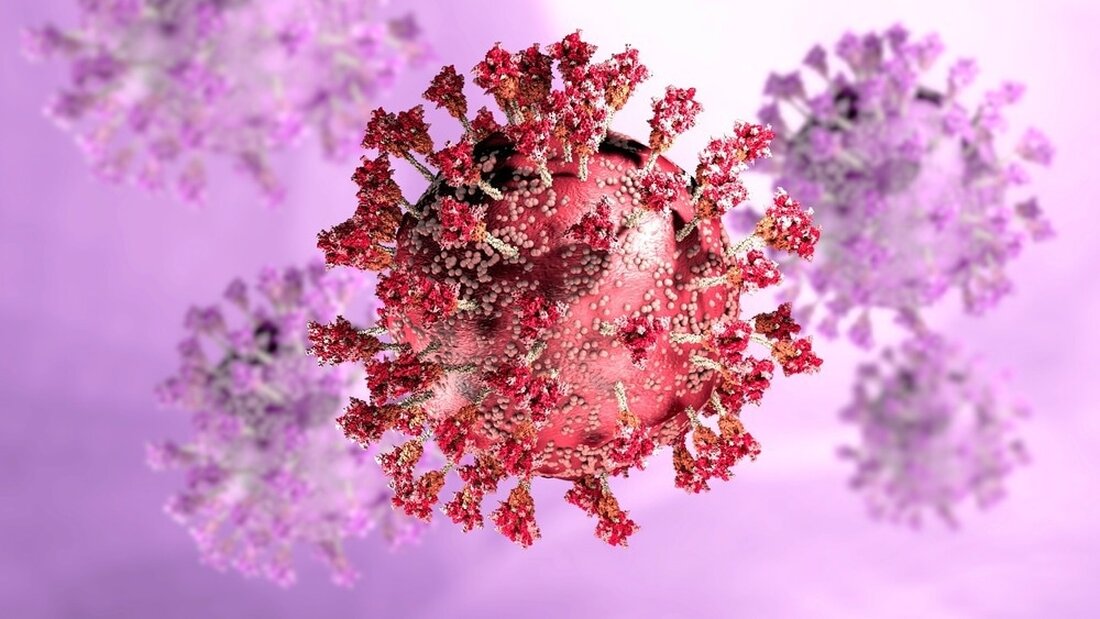Biochemical and structural evidence shows that omicron mutations are better adapted to mouse ACE2 than to human ACE2
In a recent study published in PNAS, researchers showed the structural basis for how the omicron mutations nested in the receptor binding domain (RBD) adapted to mouse angiotensin-converting enzyme 2 (ACE2) rather than human ACE2. Study: Structural basis for recognition of mouse receptors by the Omicron variant of SARS-CoV-2. Image credit: Naeblys/Shutterstock Background There is much speculation about the source of the worrisome Omicron variant (VOC) of severe acute respiratory syndrome coronavirus 2 (SARS-CoV-2), but experimental evidence is scarce. Its sudden appearance and rapid spread have raised questions about its animal reservoir. A few amino acid residues distinguish the prototypical RBD from the RBD of...

Biochemical and structural evidence shows that omicron mutations are better adapted to mouse ACE2 than to human ACE2
In a recent study published in PNAS Researchers showed the structural basis for how omicron mutations nested in the receptor binding domain (RBD) adapted to mouse angiotensin-converting enzyme 2 (ACE2) rather than human ACE2.

Studie: Strukturelle Grundlage für die Erkennung von Mausrezeptoren durch die Omicron-Variante von SARS-CoV-2. Bildnachweis: Naeblys/Shutterstock
background
There is much speculation about the source of the worrisome Omicron variant (VOC) of severe acute respiratory syndrome coronavirus 2 (SARS-CoV-2), but experimental evidence is scarce. Its sudden appearance and rapid spread have raised questions about its animal reservoir.
A few amino acid residues distinguish the prototypical RBD from the RBD of bat coronaviruses. The Omicron BA.2 RBD differs from the prototypical RBD by 16 residues, with seven nested within the receptor binding motif (RBM) and directly contacting ACE2.
About the study
In the present study, researchers recovered the evolutionary traces of omicron RBM mutations. They examined ACE2 recognition of the RBD of the omicron, focusing on mutations Q493R, Q498R, N501Y and Y505H, which surround two mutation hotspots, hotspot-31 or hotspot-353.
The researchers used site-directed mutagenesis to synthesize the gene that encodes the SARS-CoV-2 prototypes S, hACE2 and mACE2. Next, they used a surface plasmon resonance (SPR) assay to measure the binding interactions between RBDs and ACE2 molecules. To confirm the SPR data, the team also conducted an Omicron pseudovirus entry test. They packaged Omicron pseudoviruses with four reverse mutations (Q493R, Q498R, N501Y and Y505H) before infecting mACE2-expressing cells.
Finally, the team determined the crystal structure of Omicron RBD in complex with mouse ACE2 at 2.84 Å.
Study results
Although the prototypical SARS-CoV-2 did not efficiently infect mice, other previous SARS-CoV-2 VOCs from humans and other animal species had evolved the N501Y mutation to facilitate SARS-CoV-2's use of the mACE2 receptor. Furthermore, only mice have asparagine (Asn31) and histidine (His353) in their ACE2 sequence, suggesting that Omicron evolved in mice.
The SPR assay showed that the prototypical RBD did not bind mACE2, while the Omicron RBD bound mACE2 with good affinity. Introducing the reverse mutations R493Q, R498Q, Y501N, and H505Y into the RBD of the omicron only slightly reduced mACE2 binding. In addition, the study identified Q493R, Q498R and Y505H RBM mutations that are structurally specifically adapted to mACE2, suggesting that these mutations were the evolutionary traces left by Omicron.
It is likely what happened during the evolution of SARS-CoV-2: A SARS-CoV-2 variant containing the N501Y mutation spread from humans or another animal species to mice. Later, as this variant spread in mice, mouse-specific RBM mutations (e.g., Q493R, Q498R, and Y505N) developed, contributing to the emergence of the Omicron VOC. The ACE2 sequences of some rat species also contain Asn31 or His353. In addition to humans, Omicron may have been transmitted to other species whose ACE2 contained virus binding motifs (VBM) residues compatible with the Omicron RBD.
The chimeric Omicron RBD-chimeric mACE2 complex revealed the extensive interactions between the Omicron RBM and the mACE2 virus binding motifs (VBMs). Hotspot-31 stabilizes the core of the RBM/VBMs interface, where lysine-31 and glutamic acid35-VBM residues form a hydrogen bond with glutamine493. In mACE2, residue 31 is an asparagine and replaces Lys31 in hACE2. Thus, Arg493 in RBM forms two bifurcated hydrogen bonds with Asn31-VBM at the interface between the Omicron RBM and mouse VBMs, thereby stabilizing the RBM/VBMs interface and increasing the affinity of Omicron RBD for mACE2. Overall, the Omicron mutation Q493R surrounding hotspot-31 structurally adapted to Asn31 in mACE2.
Conclusions
The current study data showed that the Omicron RBD was well adapted to mouse ACE2 before it even began infecting humans. The researchers used biochemical and structural evidence to show that mice facilitated the development of the Omicron VOC, providing much-needed insight into the evolutionary origin of SARS-CoV-2. These findings would also facilitate epidemiological surveillance of SARS-CoV-2 in animals such as mice and rats to elucidate the evolutionary history of SARS-CoV-2 and prevent future coronavirus pandemics.
Reference:
- Strukturelle Grundlage für die Erkennung von Mausrezeptoren durch die Omicron-Variante von SARS-CoV-2, Wei Zhang, Ke Shi, Qibin Geng, Gang Ye, Hideki Aihara und Fang Li, PNAS 2022, https://www.pnas.org/doi/10.1073/pnas.2206509119.

 Suche
Suche
 Mein Konto
Mein Konto
